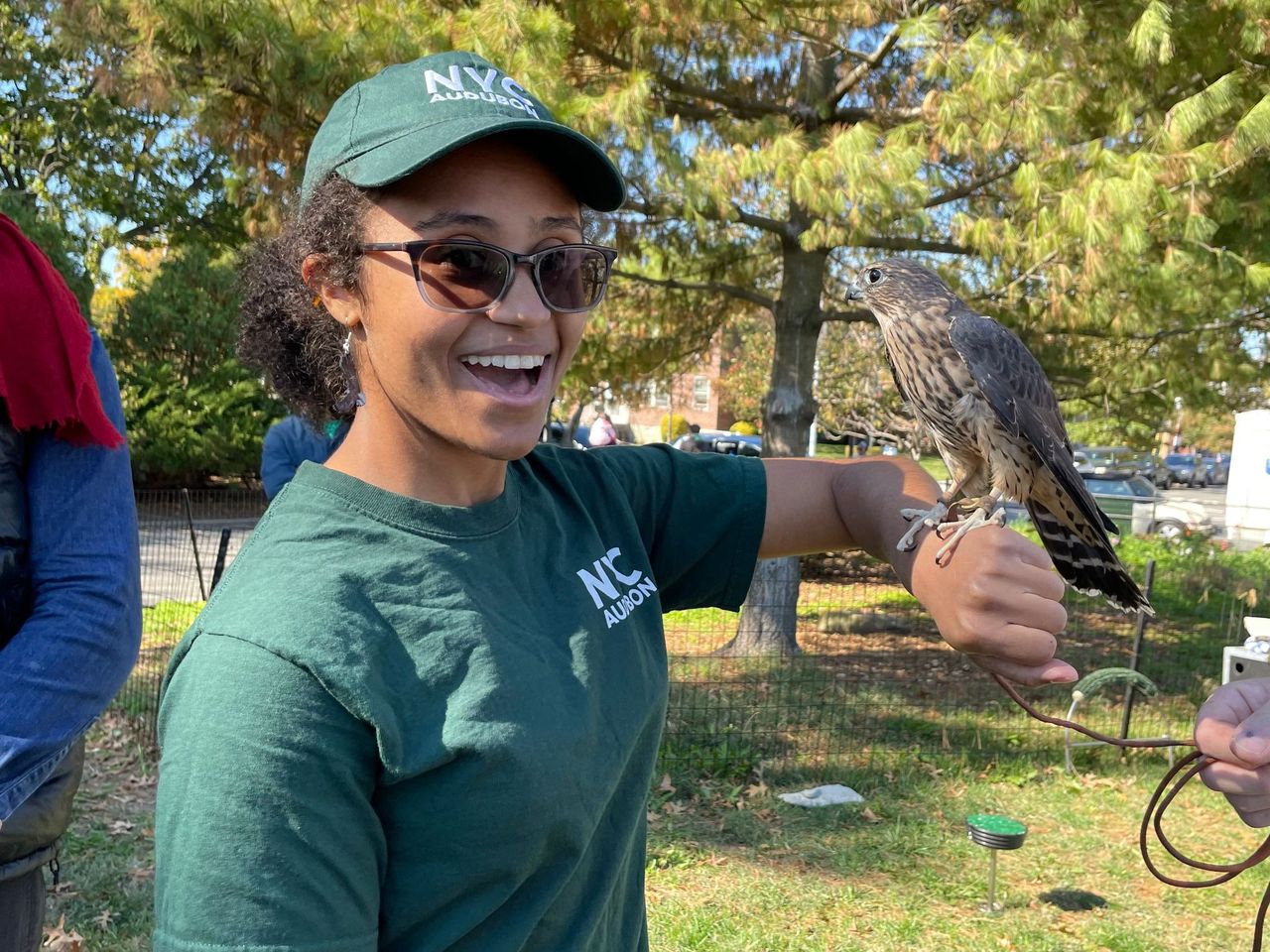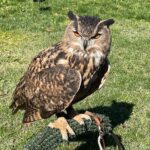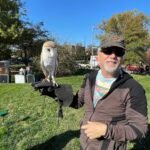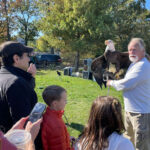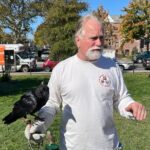As winter approaches, birds migrate south for warmer weather, but several raptors paid one more visit to Marine Park.
Residents gathered on Saturday morning outside the Carmine Carro Community Center in Marine Park for the annual Raptorama! event. The locals got up close and personal with various birds of prey, such as owls, falcons, hawks and even an eagle.
Raptorama! is a collaborative effort by NYC Audubon, American Littoral Society, Jamaica Bay-Rockaway Parks Conservancy, Marine Park Alliance and the Wildlife In Need of Rescue and Rehabilitation (WINORR). The showcase educates the public about these predatory avians and their diet, hunting and migratory patterns, and living standards.
Led by Bobby Horvath, founder of WINORR, which provides suitable treatment for injured and abandoned avian wildlife, taught folks about the various raptors displayed.
Several of these birds were found injured and are unable to fly – including a red-tailed hawk, who was injured from pellets fired by a shotgun, and a raven named Phoenix, who caught on fire – are now cared for in captivity, but are unable to be released in the wild.
Such avians included the Eurasian eagle-owl, bald eagle, barn owl, burrowing owl, eastern screech-owl, peregrine falcon, rough-legged hawk, merlin, American kestrel and the aforementioned red-tailed hawk and raven.
“We’re trying to bring these animals, these ambassador animals, out in public so that people can get the opportunity to meet them close up and try to cultivate more animal lovers,” said Horvath. “People who are passionate and people who want to help these guys succeed in the wild.”
Throughout the event, many people learned new facts and safely took pictures with the birds of prey, such as the peregrine falcon who can reach up to 200 mph when diving to capture its prey or how a Eurasian eagle-owl can live for 20 years in the wild and up to 60 years in captivity.
“It’s really nice to actually see them up close, much closer than you usually do when you’re bird watching, even with your binoculars. It’s special,” said Elaine, an avid bird-watcher. “I didn’t know all of their lifespans, and it is interesting learning they tend to get injured mostly when they’re fledging.”

